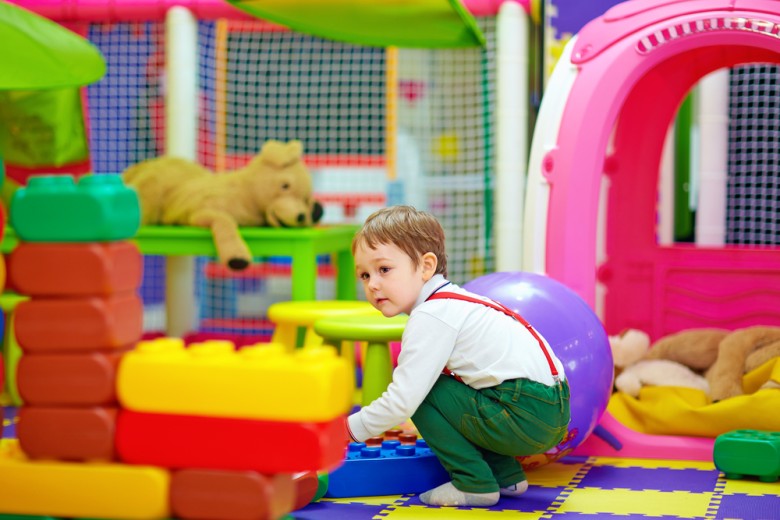How To Select a Good Daycare

In general, you should choose a daycare that will best reflect your style of parenting as well as facilitate good child development. The following checklist takes into consideration these two important guidelines, and offers some special criteria for parents who have children between the ages of six months and four years.
#1 Licenses and Accreditation
At a minimum, the daycare (individual, family or center) should be licensed by the proper state licensing agency to meet the minimum standards for health and safety. Further, the license should be displayed on the premises. Some preschools are also accredited by the National Association for the Education of Young Children. This is not a necessary requirement, however, if you are looking for an educational program, it might be applicable.
#2 The Environment
The general physical setting should be bright, colorful, inviting, spacious, and clean. There should be a safe area for outside play, as well as ample room inside for activity along with areas where children can have quiet time. Infant areas should be separate and quiet. Equipment should include an array of age appropriate toys, materials for creative self-expression, and motor activity. The overall environment should be designed for children and equipped with child-size furniture, cubbies for individual supplies, and displays and toys at eye level.
#3 The Staff
This is by far the most important aspect of your assessment, because the staff are who will directly influence and facilitate your child's development and well-being. What you are looking for are warm, nurturing, and engaging caregivers that are emotionally mature and stable. It is best if they have completed training in early childhood development and are experienced in working with children. The manager should have experience as a preschool teacher, and should promote continued education and training for staff. Of great importance is the issue of staff turnover. You want teachers who will be with your children for the full length of their enrollment. Other issues to pay attention to are the overall philosophy regarding discipline, program curriculum, and attitudes toward play. Staff should respond to children one-on-one and make ample use of positive reinforcement, positive discipline, and appropriate limit-setting. Staff to child ratio should be as small as possible: 1:3 for infants, 1:5 for toddlers, 1:8 for preschoolers, and 1:12 for school aged are the maximums.
#4 The Program
The program or curriculum should be varied according to age. For children three and under, the emphasis should be on play activities that enhance development as opposed to formal educational curricula. In other words, two and three-year-olds are not ready to sit and work on basic math and language arts. Rather they should be involved in highly expressive play, pretend play, story-telling, music, dance, and other physical play activity. Four and five year old children can benefit from school readiness activities that combine elements of formal education with play and free expression. Additionally, the program should include both small-group and large-group activity, a balance between rest and activity, and adequate vigorous outdoor activity. Materials and program content should reflect positive attitudes towards cultural diversity.
#5 Family Involvement
As a parent, you need to know that you can relate directly to staff members about your child to discuss progress, behavior management strategies, developmental issues, or any concerns you may have. The daycare center or home should have an open door policy allowing parents to visit or drop in as they wish. The manager should be accessible and responsive to your questions and concerns. The program should include a number of activities that involve parents and that promote parent-child-teacher interaction. All procedures and policies should be available in writing.
#6 Safety and Health
The general environment should be clean and well ventilated. Bathrooms should include the proper equipment for young children and should be cleaned daily. Toys should be in good repair. The outside area should be fenced and well supervised. Children should never be unattended. The area for infants should be secured so that older children cannot have access without accompaniment by staff. All medication should be kept in a central location out of reach of the children. Find out policies for administering medication. Know who is responsible for driving children on field trips and check to see that vehicles are in good repair. There should be specific policies regarding injuries, contacting parents in case of emergencies, and medical intervention. Staff should be trained in CPR, and first aid should be on-site.
#7 Final Considerations
When looking for a daycare, it is best to get recommendations from other parents. Do your research well ahead of time and be sure to make several on-site visits to any prospective center. During those visits, conduct interviews with a number of staff members including the manager. If you decide on a center, it is important to develop a close working relationship with the caregiver that will be directly responsible for your child. This person will play a primary role in your child's early development, and you want to be sure that a warm and nurturing attachment is facilitated between your child and the caregiver along with a cooperative working relationship between that person and you as the parent. In a good situation, you will be working as a team with that person until your child graduates to kindergarten.
